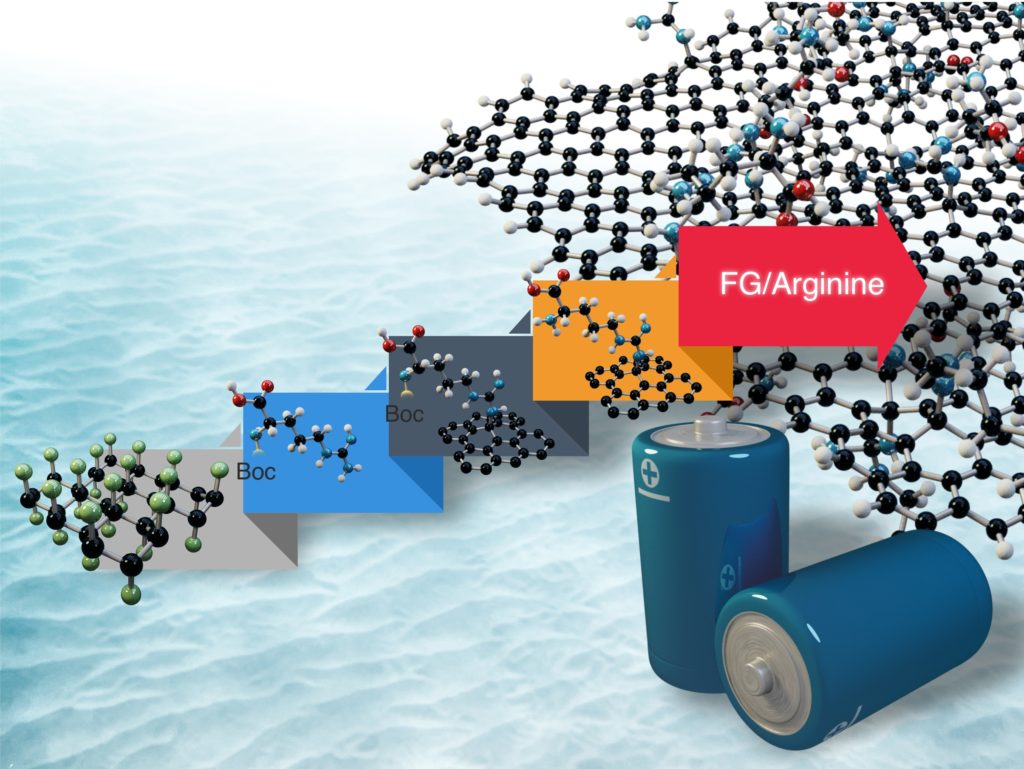New material for supercapacitors proves highly stable and eco-friendly
An eco-friendly electrode carbon material that can be used, thanks to its properties, in energy storage applications was developed by scientists from the Czech Advanced Technology and Research Institute (CATRIN), Palacký University Olomouc, and VSB—Technical University of Ostrava. The material proved its high capacitance and stability during supercapacitor testing.
“We managed to synthesize a new graphene derivative, on the surface of which we attached new functional groups. Thanks to our long experience with two-dimensional fluorographene chemistry, we were able to bind arginine, a type of amino acid, to the graphene sheet from both sides. By tuning the reaction conditions and adding a non-toxic, pore-forming agent—potassium carbonate—we achieved an optimal degree of functionalization and porosity in the material. These qualities make the material an excellent candidate for supercapacitor applications, for example,” said Veronika Šedajová, one of the authors of the study published in ChemSusChem.

A high capacitance of 390 F/g at a current density of 0.25 A/g was achieved by optimization of the properties. “We examined the applicability of the electrode material under typical operating conditions by testing the assembled supercapacitor for up to 30,000 charging/discharging cycles, with the material retaining over 82 percent of initial capacitance. Moreover, this work opens the door to an entirely new group of graphene derivatives with covalently bonded amino acids that can enable many applications, like energy storage or sensory applications,” confirmed another author Michal Otyepka.
Preparing eco-friendly electrochemically active electrode materials based on covalently functionalized graphene derivatives is a major challenge for scientists worldwide. These materials offer huge potential for energy storage applications. Covalent grafting of functional groups onto graphene’s surface, however, is challenging due to its low reactivity. This disadvantage can be circumvented by fluorographene chemistry. Researchers from CATRIN were able to capitalize upon their long-term research in this area. The team led by Michal Otyepka focuses on the 2D chemistry of fluorographene also thanks to the support of the European Research Council.


